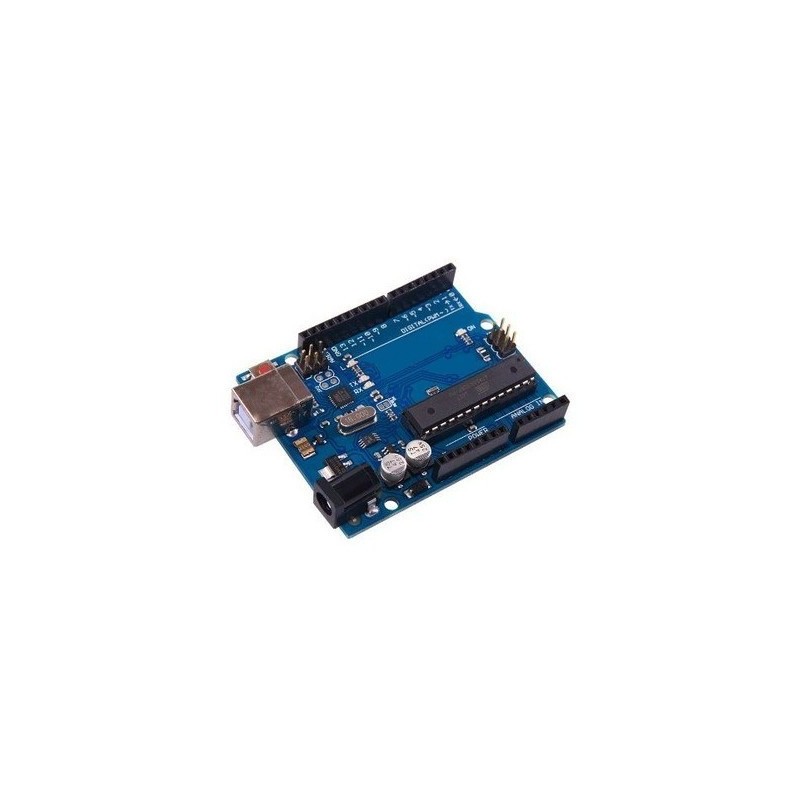



zł45.35 tax excl.
Equipped with an equivalent Atmel ATmega328 microcontroller from the AVR family, the board offers 14 I/O lines, 6 PWM channels, and 6 analog inputs. An additional chip communicates via the USB interface
This board is based on the ATmega328 microcontroller from the AVR family, offering 14 I/O lines, 6 PWM channels, and 6 analog inputs. An additional chip communicates via USB.
Manufacturer BTC Korporacja sp. z o. o. Lwowska 5 05-120 Legionowo Poland sprzedaz@kamami.pl 22 767 36 20
Responsible person BTC Korporacja sp. z o. o. Lwowska 5 05-120 Legionowo Poland sprzedaz@kamami.pl 22 767 36 20
Development board equipped with RP2040 microcontroller, RGB LED diodes, buzzer and Qwiic/STEMMA QT connectors. Pin spacing compatible with Arduino Nano. Cytron MAKER-NANO-RP2040
Board compatible with Arduino, equipped with the ATmega32U4 microcontroller
No product available!
Board compatible with Arduino, based on ATmega328P. Equipped with an area with prototype holes, a breadboard, 12 LEDs, a button and a buzzer. Cytron MAKER-UNO-X
Development board based on the R7FA4M1AB3CFM microcontroller and compatible with Arduino UNO R4 WiFi. It is equipped with ESP32-S3FN8 with a dual-core 32-bit Xtensa LX7 core and wireless communication in the 2.4GHz WiFi band and Bluetooth LE. Waveshare R7FA4 PLUS B
Development board based on the R7FA4M1AB3CFM microcontroller and compatible with Arduino UNO R4 Minima. Waveshare R7FA4 PLUS A
With Maker Uno RP2040, we bring the power of the RP2040 chip into the familiar Uno form factor. We maintain the user-friendly nature and plug-and-play features that have contributed to the popularity of the Arduino platform, while utilizing the advanced capabilities of the RP2040 to enhance its performance. Additionally, this board has been enriched with Maker series features that support the learning process and spark creativity. Cytron MAKER-UNO-RP2040
Small evaluation board based on the ATmega328, RoHS
Versatile development board with the ATmega328P microcontroller, which, thanks to its compatibility with Arduino UNO and variety of functions, is an excellent choice for many projects
Compact microcontroller board with an ATmega32U4 chip that integrates with USB to act as a HID device such as a keyboard or mouse. It operates at 5V at 16MHz, offering 20 digital I/O lines, of which 7 support PWM and 12 act as analog inputs.
Board compatible with Arduino Nano. It is based on the ATmega328P microcontroller with 32 KB Flash, 2 KB SRAM and 1 KB EEPROM. It has 12 LEDs, a buzzer and a user button. Cytron Maker Nano
The board is equipped with ATSAMD21 microcontroller with ARM Cortex-M0 core. It has connectors and dimensions compatible with the Arduino Uno Rev3. HW-819
A compact board similar to Seeeduino V4.2/Arduino UNO and fully compatible with Arduino Nano. It uses a USB Type C connector and a Grove I2C connector. Seeed Studio 102010268
No product available!
Development board with NXP iMX RT1011 processor with ARM Cortex M7 core equipped with AirLift WiFi module. It has Arduino UNO compatible connectors and a STEMMA QT connector for I2C devices. Adafruit 4950
No product available!
Development board with ATmega328P microcontroller compatible with Arduino Uno Rev3. Waveshare R3 PLUS
Module with ATmega4808 microcontroller from AVR family (48 KB Flash, 6 KB SRAM, 256 B EEPROM). The module has 14 I / O lines, 6 PWM channels, 8 analog inputs.
No product available!
A miniature development board with ATtiny85 microcontroller, on which 6 I / O pins were derived. The module is supported by Arduino IDE. modATT85
No product available!

Equipped with an equivalent Atmel ATmega328 microcontroller from the AVR family, the board offers 14 I/O lines, 6 PWM channels, and 6 analog inputs. An additional chip communicates via the USB interface
